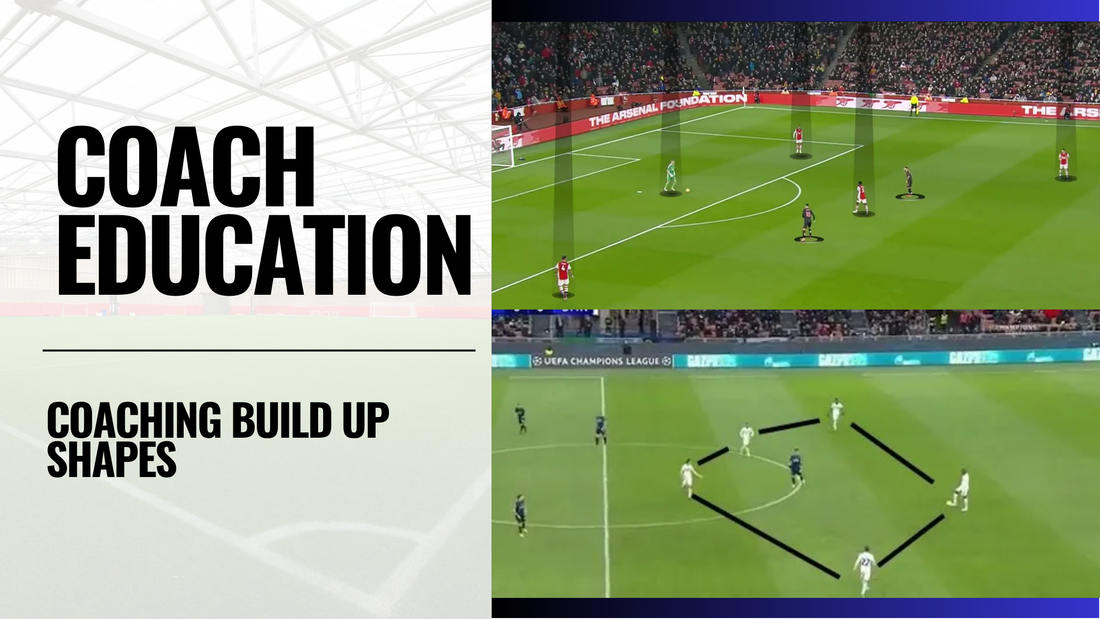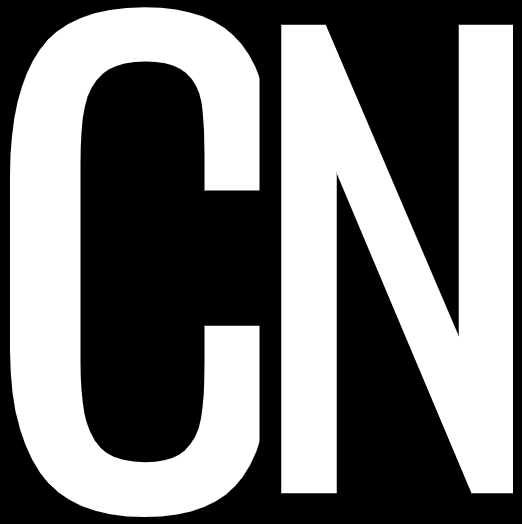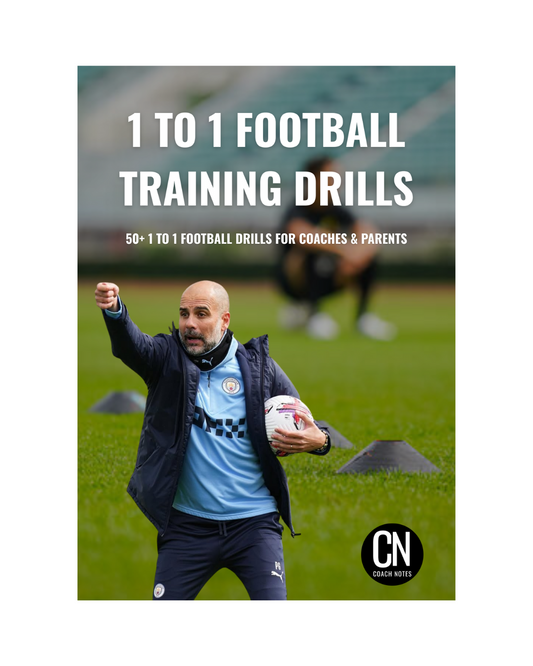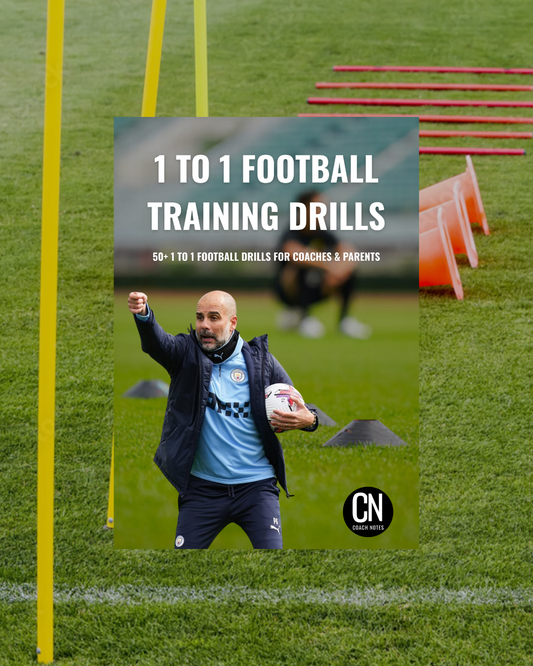
How to Coach Build Up Shapes
Share
In modern football, formation alone doesn’t tell the full story. While line-ups are announced as 4-3-3s, 3-4-3s, or 4-2-3-1s, these structures are fluid, particularly during in-possession moments. One of the most important elements of the in-possession phase is the build-up shape, which is how a team structures its players to play out from the back and progress the ball into attacking areas.
Understanding build-up shapes allows coaches to create clearer tactical models, maximise the strengths of their squad, and give players repeatable patterns to manage pressure and break lines.
🧱 What Is a Build-Up Shape?
A build-up shape refers to the team’s positional structure during early possession phases, often involving the goalkeeper, defenders, and midfielders. These shapes are not fixed by the starting formation, they are flexible patterns built around:
- Player roles
- Trust in technical ability under pressure
- Opposition pressing strategy
- Tactical identity of the team
These shapes form the foundation of the attack, dictating how the team moves the ball from deep areas into more dangerous zones.
🔄 Common Build-Up Shapes and How They Work
Let’s look at four of the most frequently used build-up structures and how they can be created from different formations.
3-2 Shape
Structure:
- 3 players at the back (CBs or full-back tucking in)
- 2 deeper midfielders (pivot or double pivot)
Formations it can evolve from:
- 4-2-3-1: One full-back stays deep to form a back three, two midfielders hold
- 4-3-3: One full-back inverts into midfield to partner the pivot
- 3-4-3: Three CBs naturally provide the back three, with midfielders ahead
Why use it?
The 3-2 gives security and balance. It offers passing triangles and full-pitch coverage, making it easier to play around or through pressure. Many top teams use this as their default build-up shape due to its stability and fluidity.
2-3 Shape
Structure:
- 2 centre-backs at the base
- 3 players ahead, often including full-backs pushed up or a midfielder dropping deep
Formations it can evolve from:
- 4-3-3 with both full-backs pushing high and a midfielder holding centrally
- 3-2-4-1 where the wing-backs step up
Why use it?
The 2-3 offers width and central stability. It’s useful when the opponent presses high with a front three and you want to stretch the first line and create midfield overloads.
2-1-3 Shape
Structure:
- 2 CBs, 1 pivot ahead
- 3 players across the next line (could include inverted full-backs or 8s)
Formations it can evolve from:
- 4-3-3 with two midfielders high and one holding
- 3-5-2 with a central pivot and wing-backs stepping in
Why use it?
This shape supports teams that want central control and high midfield positioning. The pivot acts as a single link to distribute, while the front three in the middle support vertical progression and movement.
4-2 Shape
Structure:
- Flat back four
- Two midfielders in front of them
Formations it can evolve from:
- 4-2-3-1 or 4-4-2 shapes, often early in matches or when protecting a lead
Why use it?
This is a simplified and safe shape, often seen in teams that want to avoid risk. It can be static under pressure unless combined with intelligent movement.
🔑 What Determines the Shape You Use?
Build-up shapes aren’t selected randomly. Coaches base them on:
1. Player Profiles
- Do you trust your full-backs to receive under pressure?
- Can your midfielders play on the half-turn and break pressure lines?
- Is your goalkeeper comfortable acting as a third centre-back?
Roles must be fitted to the squad and skillset of players, not forced on them.
2. Opponent Pressing Triggers
- High pressing teams may require three or four players deep to create overloads.
- Passive pressers may be pulled out with fewer numbers.
Shape helps to control risk in different tactical environments.
3. Tactical Identity
- Possession-heavy teams may prefer shapes that prioritise ball retention and rotation.
- Vertical, counter-attacking teams may favour simpler setups that allow for quick progression.
The build-up shape should reflect the overall game model.
🧤 Using the Goalkeeper in Build-Up
Increasingly, teams use the goalkeeper as a key component in build-up. This transforms a 2-3 into a 3-2 shape, or a 3-2 into a 4-1, all designed to outnumber the first line of pressure.
Coaching tips:
- Encourage goalkeepers to be an option, not just a safety valve.
- Use rondo-based drills to improve composure and passing under pressure.
- Ensure defenders are comfortable shifting and rotating with the goalkeeper as part of the structure.
⚽️ Coaching Build-Up Under Pressure
Possession in deeper areas often draws an aggressive press. Players in build-up roles must be trained to:
- Play with composure under pressure
- Recognise when to rotate, when to play through, and when to play around
- Use triggers to identify when to break lines
Training ideas:
- 7v4 overloads in the build-up zone
- Positional rondos with fixed structure
- Build-up vs pressing scenario games
🎯 The Objective of Build-Up Play
Ultimately, the goal of the build-up shape is to:
- Move the ball from deep zones into advanced areas without losing control
- Create access to central or wide players in between lines
- Progress possession in a way that reflects the team’s overall identity
Well-coached build-up shapes provide:
- Clean transitions from defence to attack
- A platform to dominate territory and time
- Stability to control matches
💭 Final Thoughts
Your team’s build-up shape is more than just a tactical pattern, it’s a reflection of your coaching philosophy and your trust in your players’ ability to control the game from the back.
It doesn’t matter what the base formation is. What matters is how your team reorganises when it has the ball, and how well-prepared your players are to execute under pressure.
Shape your build-up wisely and you’ll shape your team’s control, identity, and success.









